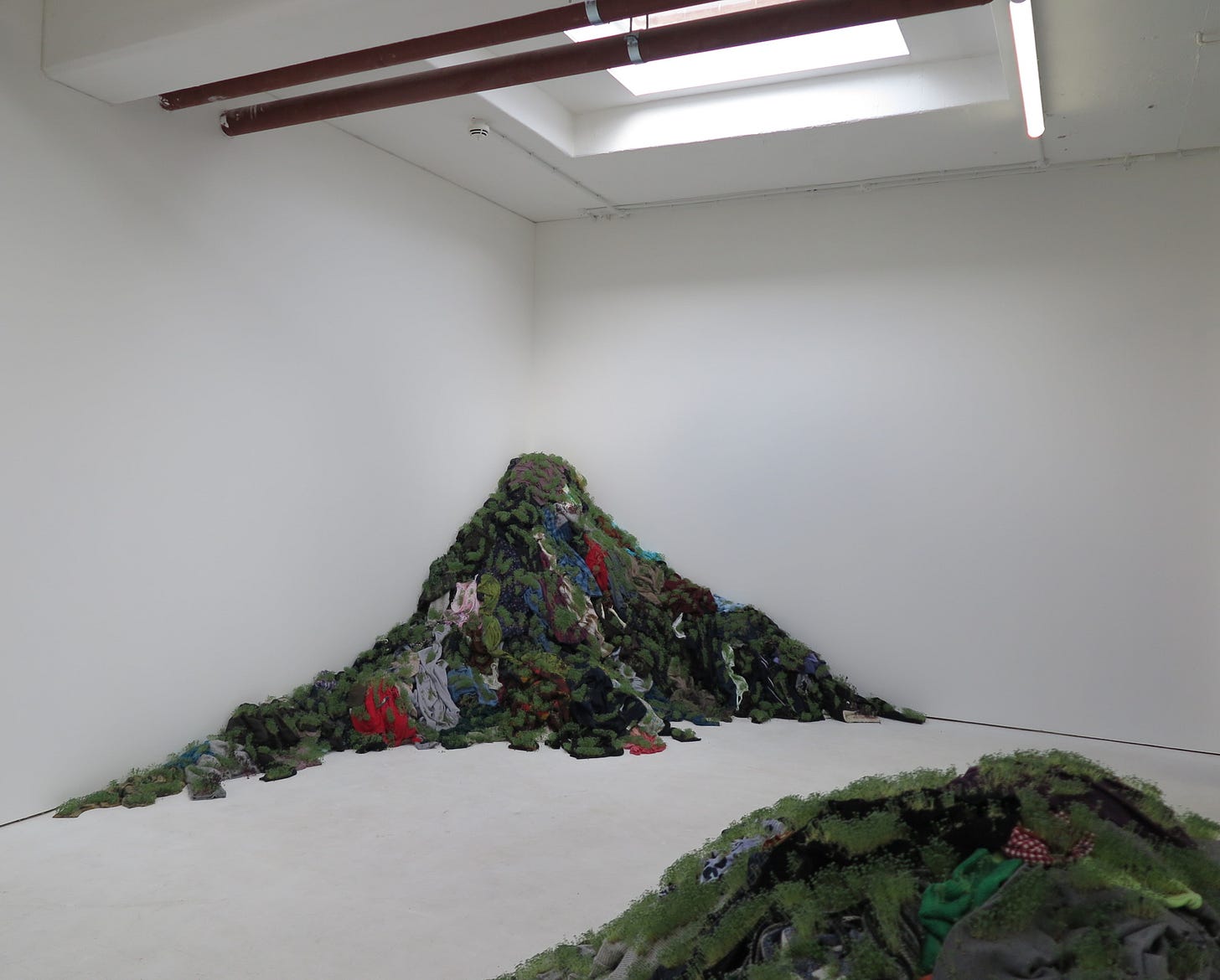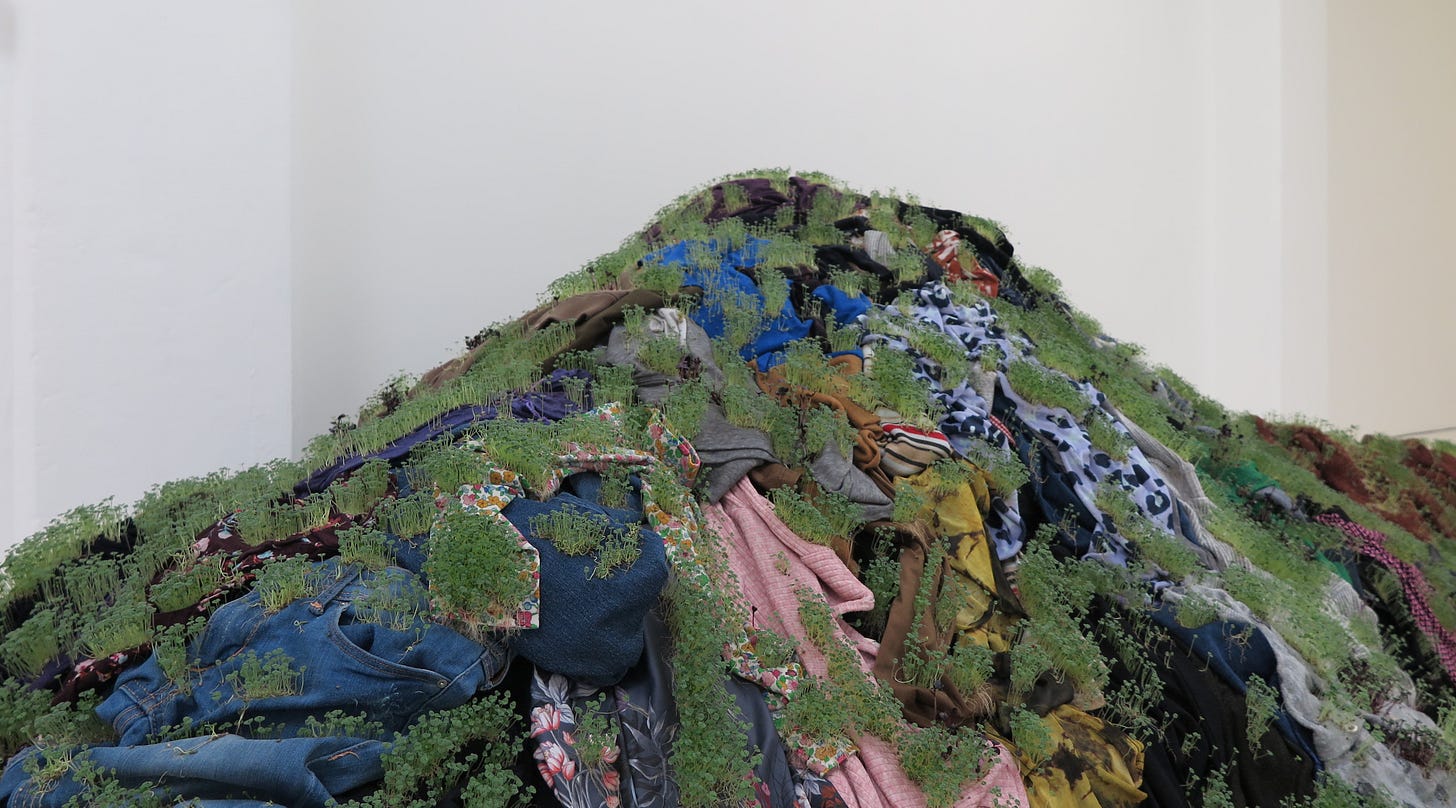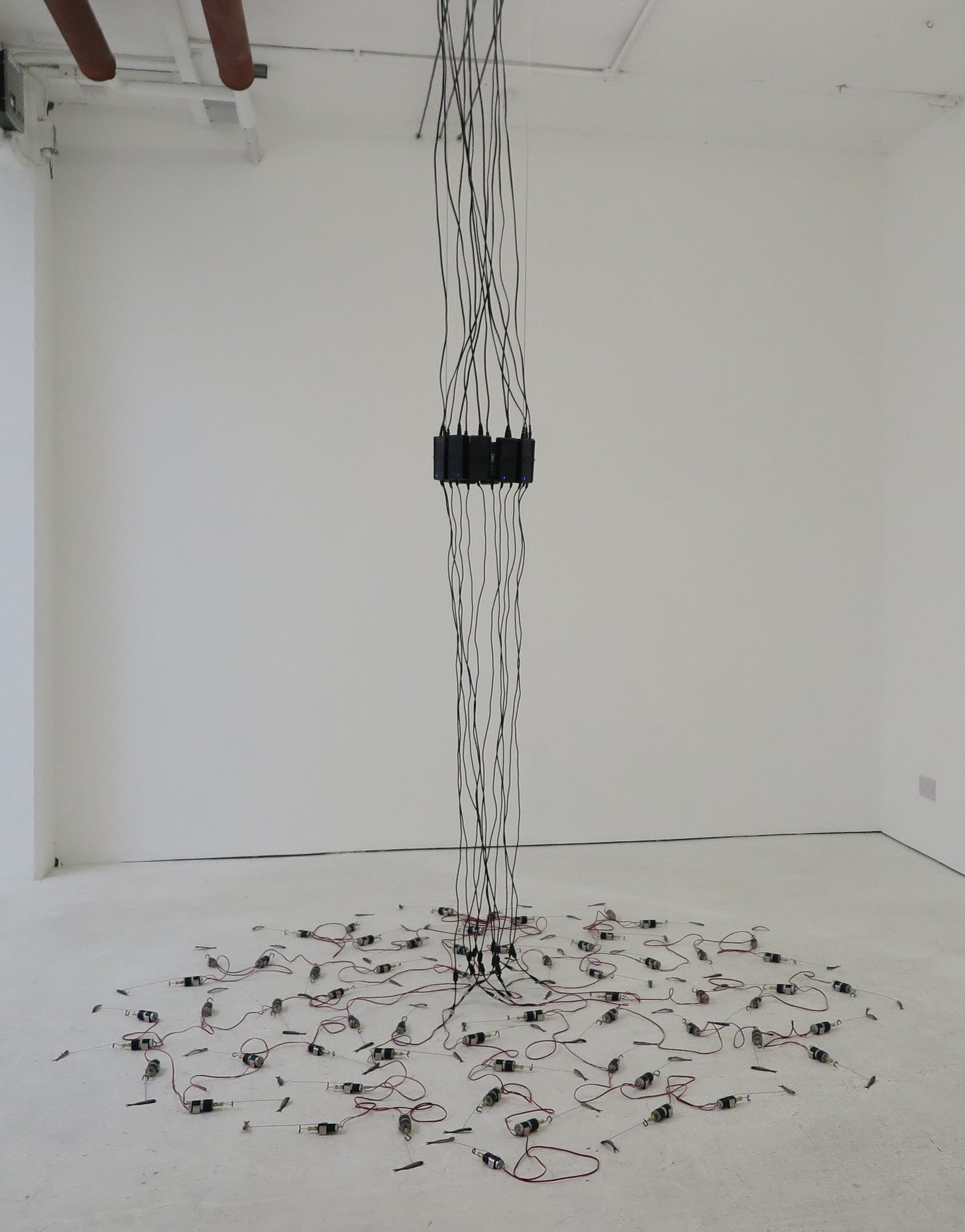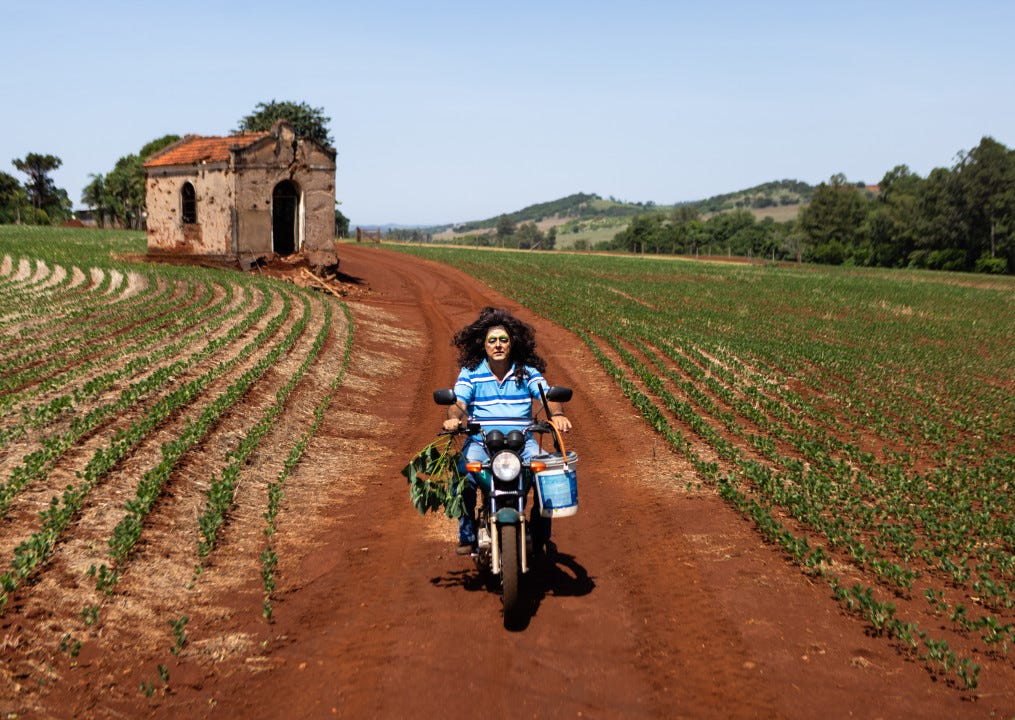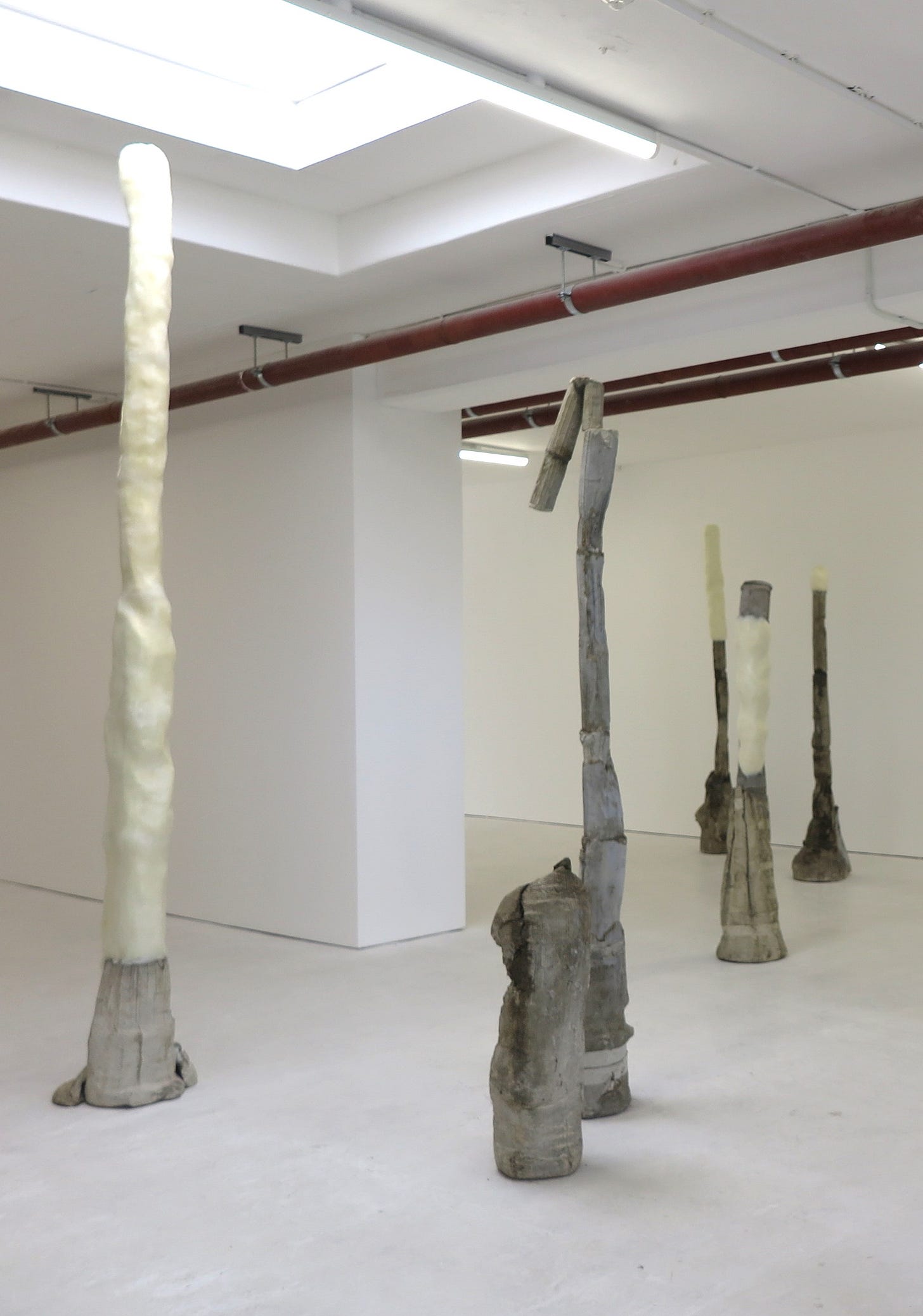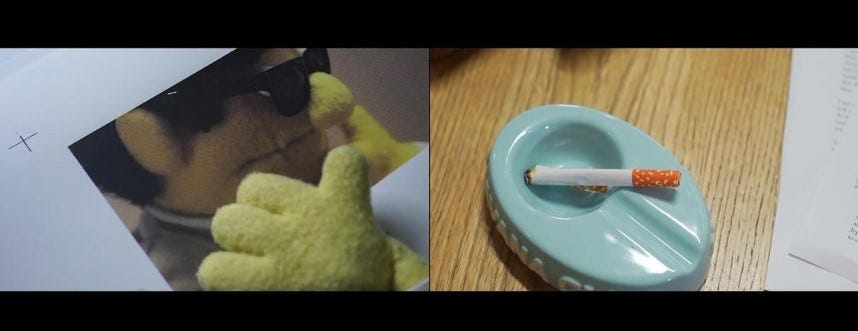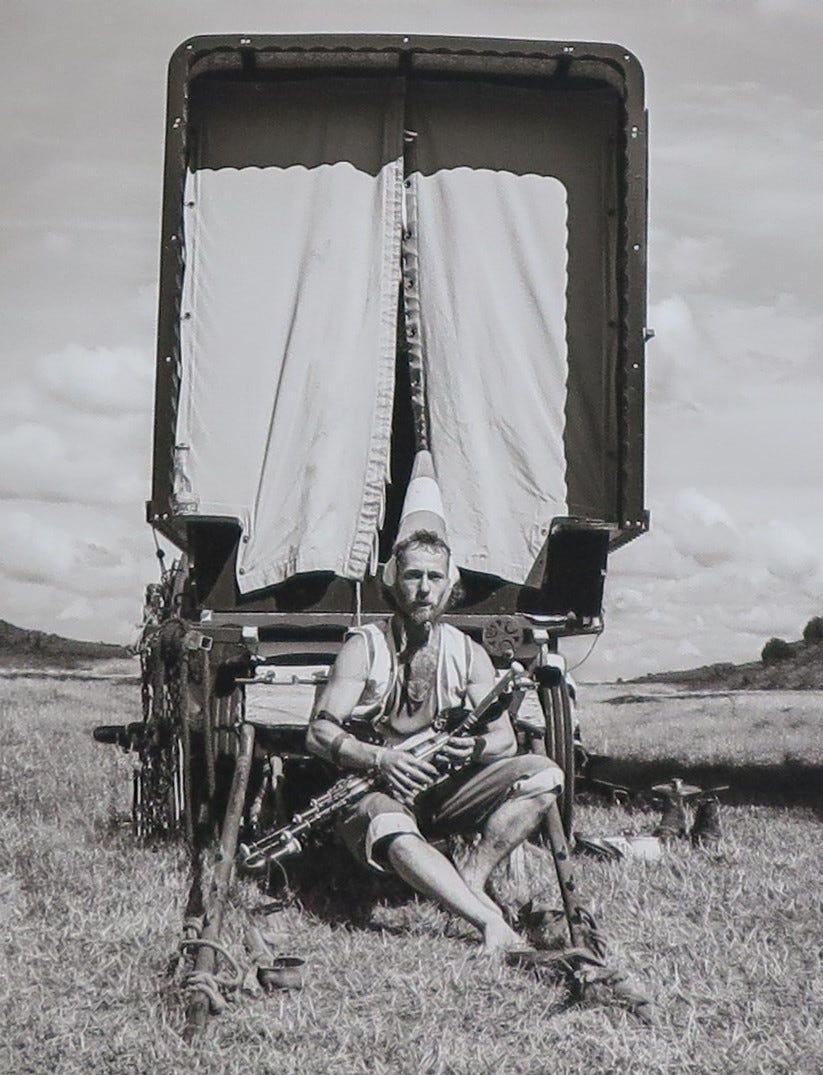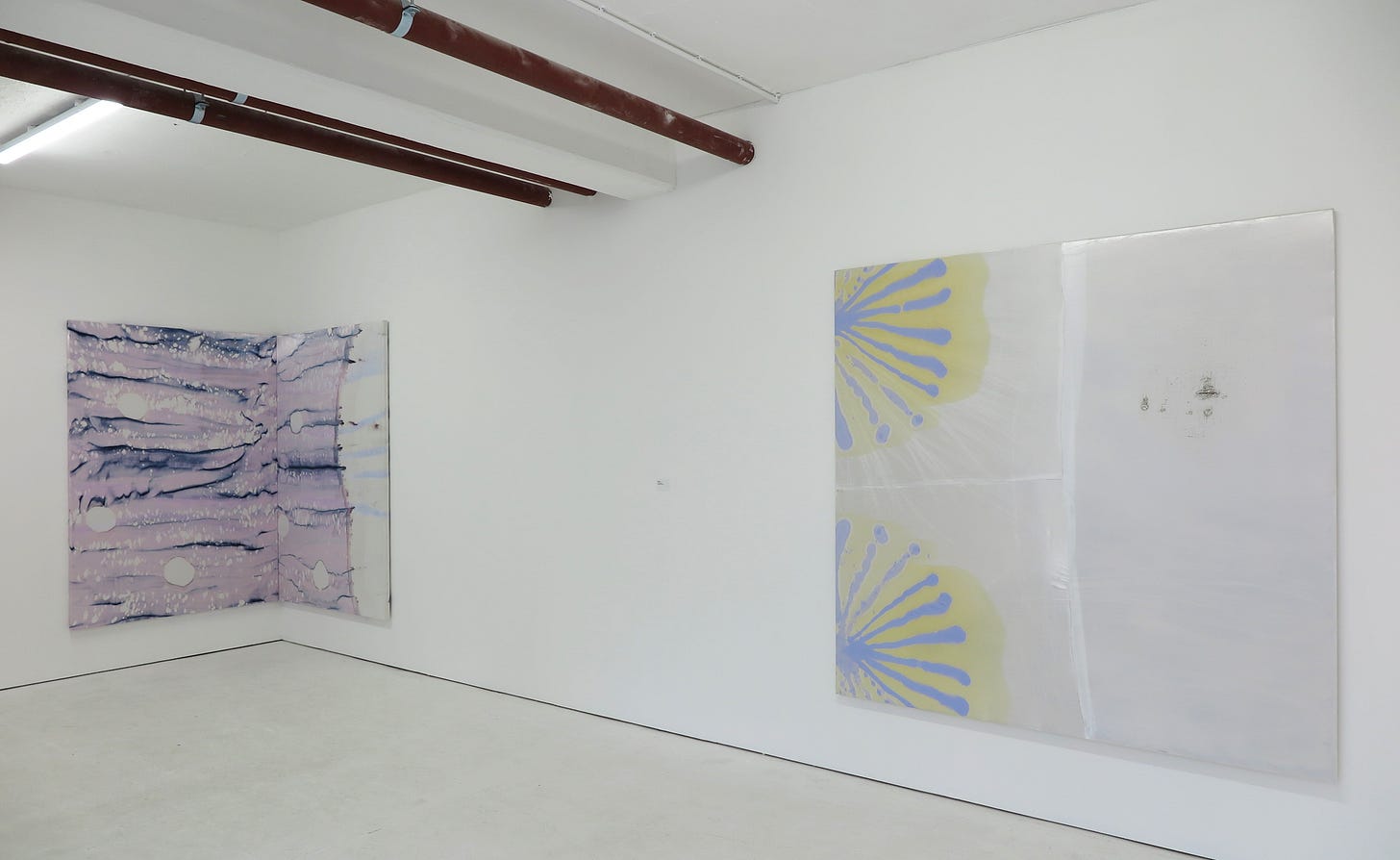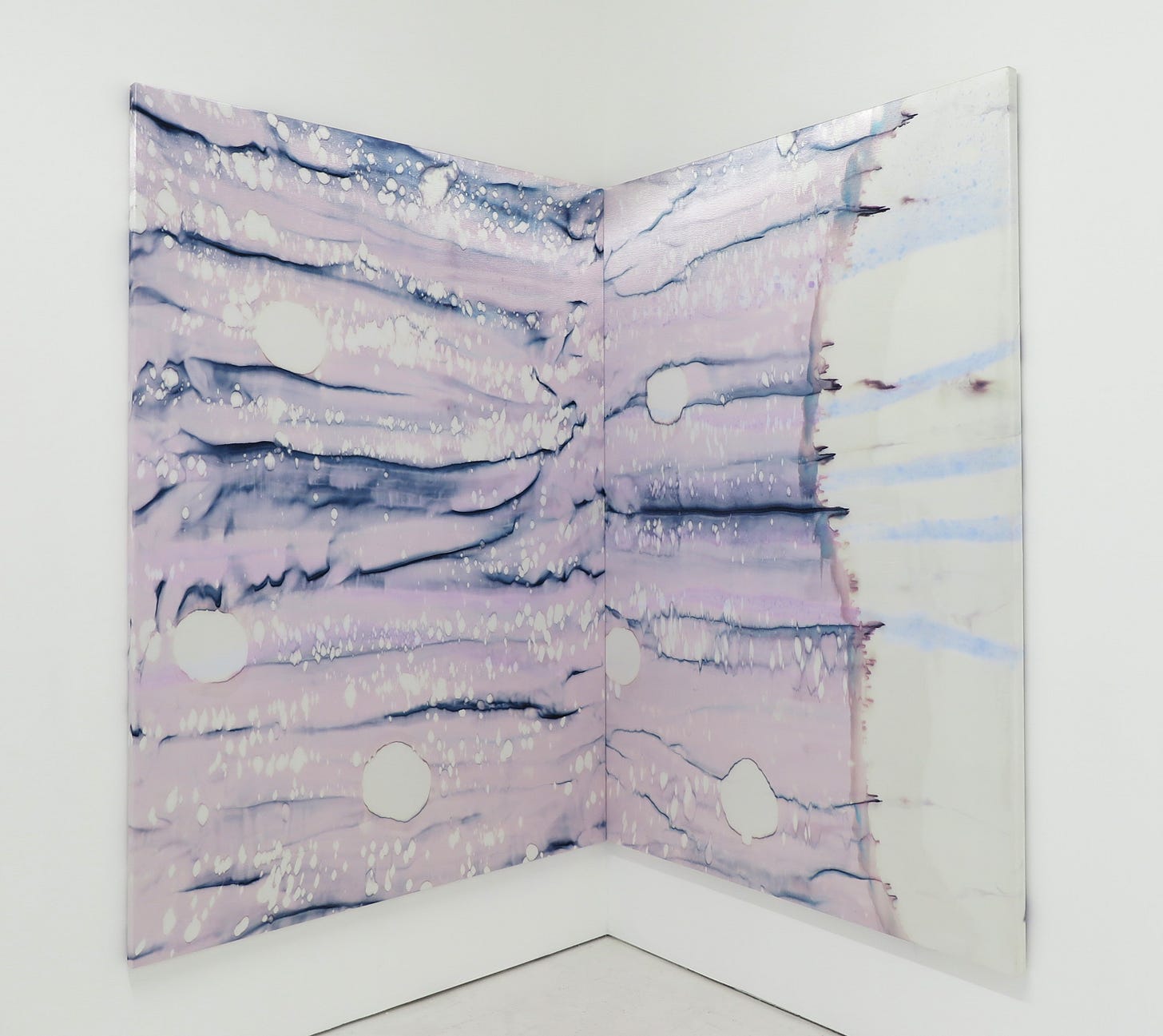Interpretive Review of Bloomberg New Contemporaries 2024 (Part 1 of 3)
The Bloomberg New Contemporaries exhibition took centre stage of Plymouth's cultural scene last Autumn before touring up to London.
Installation Photo with visitor at the The Levinsky Gallery, Plymouth, of ‘Thursdays’ by Farzaneh Ghadyanloo, 2024, Digital Photography
This article was originally published on the Plymouth Culture website (formally Made In Plymouth). The exhibition is now on show at the Institute of Contemporary Arts in London until 23rd March 2025. I will be posting this article in three separate instalments on Substack every other Saturday so keep a look out!
If you wish to read this interpretive review in full and in its original format, please follow this link to the Plymouth Culture website.
The Bloomberg New Contemporaries exhibition has returned to Plymouth after a hiatus of 60 years. Marking its 75th anniversary, this annual exhibition takes Britain’s Ocean City on a sincere yet energetic, often wildly and falsely humorous tongue-in cheek (or rather Apple-in-mouth!) excursion.
Offering a folk-inspired ballad to successfully aid your vehicle through its MOT along with self-care devices, guided meditation and a new, eco-friendly range of ‘designer’ furniture, the exhibition showcases 33 works of art by 35 artists. These artists have recently completed BA, MA, MFA and PhD courses or similar paths of artistic study from an array of universities and creative arts institutions across the UK.
The artworks in this year’s show have been thoughtfully selected by Russian-Ghanaian photographer Liz Johnson Artur (you may be familiar with her portrait of Amy Winehouse); Perminda Kaur whose sculptural and installation based practice explores themes of childhood and domesticity; and London based, Argentinian born Amalia Pica, who considers communication, language, and politics through sculpture, performance, and installation works.
Choosing such a high calibre of artworks - ranging from abstract and figurative paintings, installations, sound and digital works to moving-images and sculpture - we can only imagine the curators’ passionate discussions behind closed doors as they came to their final selection from this year’s entries.
Spread across three venues in Plymouth - MIRROR, The Levinsky Gallery and KARST - the exhibition offers an exciting opportunity for these three cultural venues to collaborate. Welcoming a range of audiences from art enthusiasts and students, to those brimming with curiosity, wanting to see, wanting to learn.
Each work on show ties in with one or more of the exhibition’s overarching themes: displacement, environmentalism, identity politics and consumerism.
Beverley Duckworth’s installation at KARST, 2024, disused clothing and cress seeds
KARST
~ A Cave of (Un)Earthly Delights ~
Let’s begin in KARST, on George Place in Plymouth’s Millbay with Beverley Duckworth’s (b. UK; MFA Fine Art, Goldsmiths University) living installation of recycled clothes, fabrics and sprouting cress shoots.
A monster at rest, slumped in the corner, our own haphazard wardrobes and overspilling laundry baskets suddenly flash before us – we are careful not to awaken this beast of disused clothing!
Half-concealed zips, buckles and studs punctuate this strange, otherworldly ‘clothes-scape’. A grey cardigan becomes a scree slope between these valleys and crevasses of dyed fibres and pull-over purl stitches. A withered pink t-shirt sprawls, flattened at the foot of the mound. And that bright yellow M&M garment, a luminous fleck symbolic of a blossoming bouquet, the attraction of advertising, amongst the mottled dark hues.
Beverley Duckworth’s installation at KARST, 2024, disused clothing, cress seeds
We see the word ‘Happy’ endlessly repeated on one t-shirt in bubble-gum Barbie pink – a touch of irony as we consider the meaning behind this artwork. Despite being a direct comment on the detrimental environmental impacts of fast fashion, a hopeful solution is suggested with the sprouting, even edible, seeds. Waste is re-defined and re-imagined as a life-giving ecosystem.
Floundering Fish
Tom Fairlamb, ‘The Current Current of Current’, 2024, Installation view
It’s the whirring and the twitching. If the electrical-mechanical sound doesn’t stop you in your tracks, Tom Fairlamb’s (b. 1993, UK; MA Contemporary Art Practice, Royal College of Art) quivering shoal of minnows will. ‘The Current Current of Current’ seemingly captures the fish at a moment between life and death. Arranged in a circular shape on the floor, the trembling fish pause before their shaking and rocking begins again.
Cables of electricity spread down from the ceiling and across the expanse of the circle, trailing like the routes of trawlers on a shipping map, or the strands of a purse sein fishing net. These individual fish are all connected. Have we become desensitised to the suffering of sea creatures? Is Tom’s artwork representative of some cruel Frankenstein-inspired ‘tested-on-animals’ experiment? And how does this piece relate to the fishing heritage of a city such as Plymouth?
Danilo Zocatelli Cesco, ‘Dear Father It Feels Like Leaving Was Necessary For Me To Realise That I Needed To Return’, 2024, Photograph
Passing Danilo Zocatelli Cesco’s (b. 1989, Brazil; MA Photography, Royal College of Art) triptych of photographs, we observe the artist’s father in drag - first atop a tractor, then alongside an animal carcass and finally riding a motorbike in the photograph ‘Dear Father, it feels like leaving was necessary for me to realise that I needed to return.’ This Poussain-esque landscape seems almost of Greek arcadia, heightened by the inclusion of a distant ruin. We notice the fig branch which Danilo’s father clutches, symbolising healing and enlightenment. This father rides through his farm in drag more Greek god setting out to spread the word than Hell’s Angel.
Valentino Vannini, ‘ANON - DTF’, 2024, Concrete, insulation foam, metal, branches, glass, petroleum jelly, lube, Installation view
As though in a petrified forest, we wander a little aghast between the tilting organic twists, bends and towers of Valentino Vannini‘s (b. 1976, Italy; Glass & Cast Fellow, City & Guilds of London Art School) ‘ANON - DFT’ installation. These stalagmites of concrete, foam and petroleum jelly soar to the ceiling of the gallery like ivory tusks or charred-out tree stumps - a sort of re-imagining of Paul Nash’s painting ‘We Are Making a New World.’ Is this life or is this death? Is this the New World of the Anthropocene?
Joshua Whitaker, Still from ‘The Form An Object Takes In Oblivion’, 2024, Moving image
We meet the chain smoking, charismatic puppet version of the writer, poet and film director Pier Paolo Pasolini (1922-1975) in Joshua Whitaker’s (b. 1987, UK; PhD Researcher, Central Saint Martins) ‘The Form An Object Takes in Oblivion’. Sometimes a little amusing but always genuine, this puppet version of Pasolini explains the themes of his latest documentary ‘The Gospel According to Saint Matthew’. Joshua’s use of dual imagery - such as the two suns staring out from the screen like a pair of penetrating eyes along with the prop of a Zeiss eye piece – echoes the alternative, second title of this work: ‘To Live In Hell and Not Despair’.
Fergus Carmichael, Still from ‘Rhadinace’, Moving image, 8 minutes
Joshua’s moving image is in stark contrast to Fergus Carmichael’s (b. 1996, UK; MA Artists’ Film and Moving Image, Goldsmiths) ‘Rhadinance’. Shots of North Sea oil rigs in misty, dying twilight are juxtaposed with lonely city images, culminating in the community event of an oil-fuelled bonfire. The dynamic score by Cameron Graham is like a heartbeat, a treacherous, suspenseful sound indicative of time running out to curb emissions.
Libby Bove, ‘So Turns The Wheel of the M.O.T. A Journey Through the Imagined History of Folk Customs Associated with the Annual Vehicle Safety Test’, 2023, Photograph
On a more light-hearted note, through photography, costume and song, Libby Bove (b.1991, UK; BA Fine Art, Bath Spa University) invites us to imagine a history of folklore and customs coaxing vehicles to pass their annual motor inspections. Centuries-old stories and beliefs imbue what’s commonplace today with the magic and superstition of the past.
Painted Velvet
Max Boyla, ‘Violet Sun’ and ‘Wave of Mutilation’, KARST installation view
Glistening with the cool transparency of an ice-skating rink, Max Boyla’s (b.1991, UK; Postgraduate at The Royal Academy Schools) ‘Violet Sun’ shimmers softly on the Gallery wall.
Separate pieces of velvet are visibly stitched together, puckering a little along the seams. We may recall Beverley’s abandoned pile of clothing, yet here the use of velvet, a composite material, addresses themes of sustainability and how petroleum products are ingrained in our lives, even reaching into the art world itself.
The delicacy of Max’s snowy white material is revealed, thin and frayed in places, its fragile nature apparent. Radiating forms in Naples yellow and light blue suggest organic, cellular structures studied under a microscope and the endless, incomprehensible realm of the cosmos. Piqued by the specks of silver glitter we perhaps connect Max’s piece to melting snow, to ice caps – cold, reflective and lonely. Scrapes and brush marks glide over the surface, as though a subtle, criss-crossing trail left behind by a figure skater. The overall sheen is as rich and luxurious as a priestly vestment, as luminous and silvery as the Moon, yet as cold as ice. The materials and minimal approach ensure a vision of balanced beauty as nuanced as an Agnes Martin.
Max Boyla, ‘Wave of Mutilation’, 2023, Ink on satin on canvas
Meanwhile, the artist’s ‘Wave of Mutilation’, installed in the corner seemingly encloses us, like a tidal wave about to break over our heads. Streaks of violet ink appear to bleed and separate, an almost - though not quite - repeated pattern, stretching like spilled fuel on the road after rain. Our sense of existence is reinforced by this pull of an ocean of ink. An ocean of ink for Britain’s Ocean City.
The central divisions in both paintings evoke the biological process of cell division and the unifying-dividing zips of Barnett Newman’s paintings. Max invites us to consider the power and beauty of nature, the cosmos and the relevance of abstraction in a digital age.
Look out for Part 2 of this article focusing on the artworks exhibited in The Levinsky Gallery in a fortnight’s time! If you can’t wait until then, don’t forget you can read this interpretive review in full on the Plymouth Culture website here.





